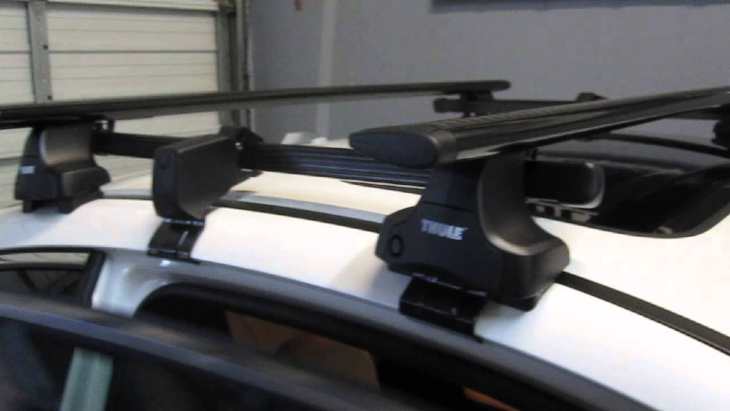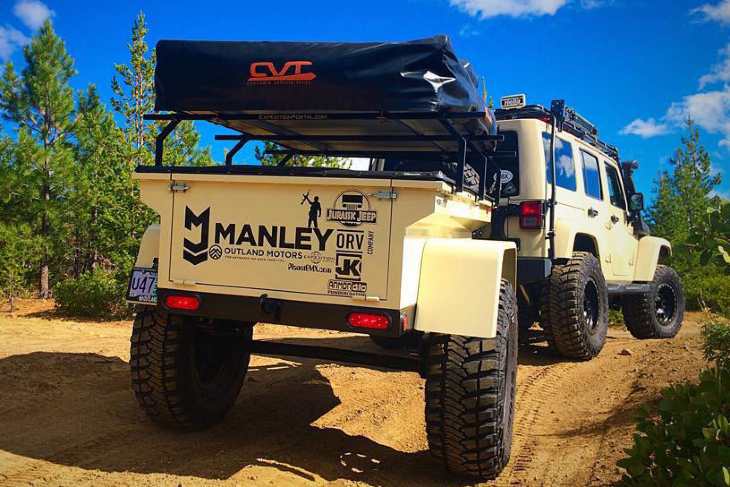One thing is certain when you’re off road – there is always lack of storage space. There is all sorts of gear you need to carry because once you are out there, the closest mechanic is at least hundreds of kilometers away. And even if you manage to fit all of your technical gear, the whole family might want to join in on the adventure which translates into a pile of contraptions and extra pieces of luggage.
So, wondering how to maximize storage in a 4×4 vehicle is completely natural. The 4WD bunch does it to their best abilities. Some go for elaborate toolboxes with compartmentalized drawers and this is supposed to remove the clutter and create extra space. Others go for cargo boxes or bags, and they place them at every imaginable position on the jeep, even under the ute tray. But the most popular solutions are roof racks and utility trailers, so stick around to see how both these options compare.

Roof Rails
These are some of the most versatile 4×4 accessories. This is mostly due to their compatibility with different types of loads which can be put away from your line of sight, yet securely placed on the roof. In specific terms: your roof can take bulky outdoor sports gear (surfboards, kayaks, bikes, skis), off road supplies (jerry cans, LPG canisters), recovery gear (recovery tracks, winches or both) and professional equipment (ladders, tools). Finding a good set of off road roof rails might give you the missing storage space you are looking for.
Advantages
Roof racks are fairly easy to install even though drilling may be required for some car roofs. One just needs to be careful to get rails that are compatible with the make and model of the 4×4. They are not expensive when compared to other gear, especially in the luggage and storage category. Although they consist of a basic frame for mounting cargo on the roof, off road roof racks can be customised for diverse types of loads. They can be extended into a roof rack basket or into auto roof rails with cage. The cost of customisation isn’t very high.
And if there ever comes a time that you don’t need them, they don’t require a dedicated space at which to be stored – they can remain on the roof at all times. They are aerodynamic and you don’t need to adapt your driving style to use them (no speed restrictions, reverse mode is the same). Once installed, car roof rails practically require no maintenance.
Disadvantages
The greatest limitation of using roof railing for storage is the capacity of your vehicle for taking loads, especially on the top. Failing to adhere to the carrying capacity of the roof rail can result in damage. And the temptation is certainly there – to put as much stuff up there as physically possible.
Then, securing large items like bikes requires special attention. If the items are too large for your roof railing frame, you need to find other solution. It’s easy to stack up everything on the roof, however reaching a specific item when you need it can be quite tricky because of the angle. And last but not least, the safety of the items stored on the car roof isn’t guaranteed – it all depends on how you secure them.

Utility Trailers
Your general utility trailer can be used to carry all sorts of loads. With a touch of customisation it can serve your recreational and professional needs just like roof rails. Upfront costs might be higher, however an off road utility trailer made from galvanized steel is capable of offering security and storage that you simply can’t get on an auto roof. It’ll probably last longer and help you carry larger loads, however everything comes with a certain trade off.
Advantages
Trailers come in different sizes, however regardless of the size you have in mind, when compared to roof box rails it will allow you to pack larger items for your adventure. And potentially more of those bulky items, too. Customization options are ample and when you consider an enclosed trailer the security is top notch. Locks and enclosure aren’t the best customization features though. You can further customize your trailer to have more than two wheels, to have a specific type of tray floor or chassis, to withstand the elements and to tailor openings according to your needs. These are all durable and useful adjustments, but beware that the costs associated with making them reality will be higher than adding a cage to your roof.
Disadvantages
Even though it has a greater carrying capacity than a roof rack, a utility trailer can significantly affect your driving style. You will need to be very cautious when maneuvering in tight areas, not to mention the dread of reversing the whole ensemble. It’s very tricky to drive a trailer over uneven surfaces, mountainous terrain and elevated ground. All of this will inevitably contribute to less efficient fuel consumption.
These heavy duty trailers consist of numerous moving parts (wheel bearings, tires, drawbars, axles, jacks) and an effort has to be put into proper maintenance of the whole system. When you no longer need the trailer, you need to have a parking spot set aside exclusively for storage (even if that’s your shed).
In the end it all comes down to your specific requirements, the budget on your hands and the options at your disposal (carrying capacity of the vehicle, storage shed, other cargo accessories). If your vehicle can take it, why not choose both options – upgrade your 4WD with both 4×4 roof racks and a ute trailer.


















